Abstract
The s-triazine cyclopropylmelamine (N-cyclopropyl-1,3,5-triazine-2,4,6-triamine) was degraded to about 6 mol of NH4+/mol of substrate by a mixture of two bacteria (strains A and D, both Pseudomonas spp.) Only strain A grew with cyclopropylmelamine as sole and limiting source of nitrogen. The organism obtained 2 mol of nitrogen/mol of substrate and excreted a product that was identified as cyclopropylammelide [6-cyclopropylamino-1,3,5-triazine-2,4(1 H,3 H)-dione]. Proteins in extracts from strain A were separated on a Sephadex G-200 column. Cyclopropylmelamine was found to be deaminated in two separable steps to cyclopropylammelide via cyclopropylammeline [4-amino-6-cyclopropylamino-1,3,5-triazine-2(1 H)-one], which was identified. Strain D could not utilize cyclopropylmelamine or cyclopropylammeline, but could utilize cyclopropylammelide (or homologue) as sole and limiting source of nitrogen and obtain about 4 mol of nitrogen/mol of substrate. Proteins in cell extracts from strain D were separated on a DEAE-cellulose column. Alkylammelides were degraded quantitatively by one enzyme fraction to 1 mol of cyanuric acid plus 1 mol of alkylamine/mol of substrate. The specific activities of enzymes in extracts of the two strains were as high as the activities observed during growth. The three activities studied in the two strains were all active under aerobic and oxygen-free conditions. The reactions appear to be hydrolytic, yielding 2 mol of NH4+ plus 1 mol of cyclopropylamine and 1 mol of cyanuric acid/mol of substrate.
Full text
PDF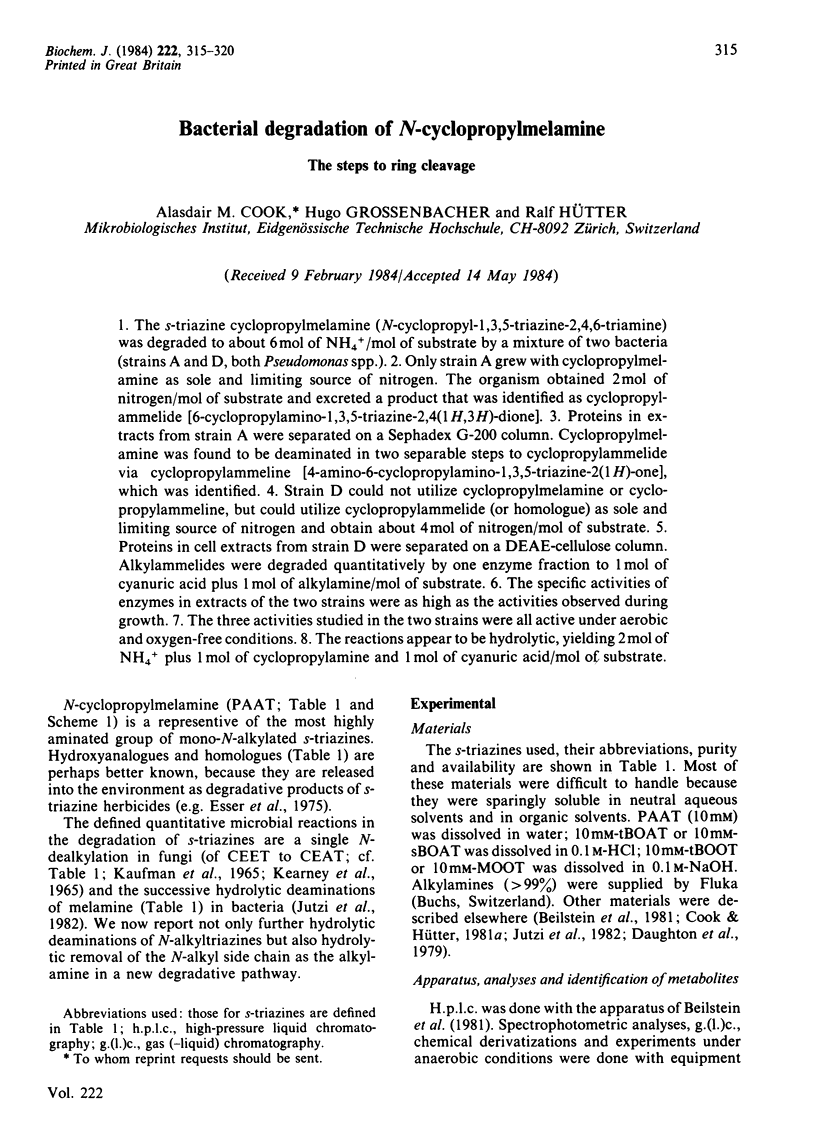
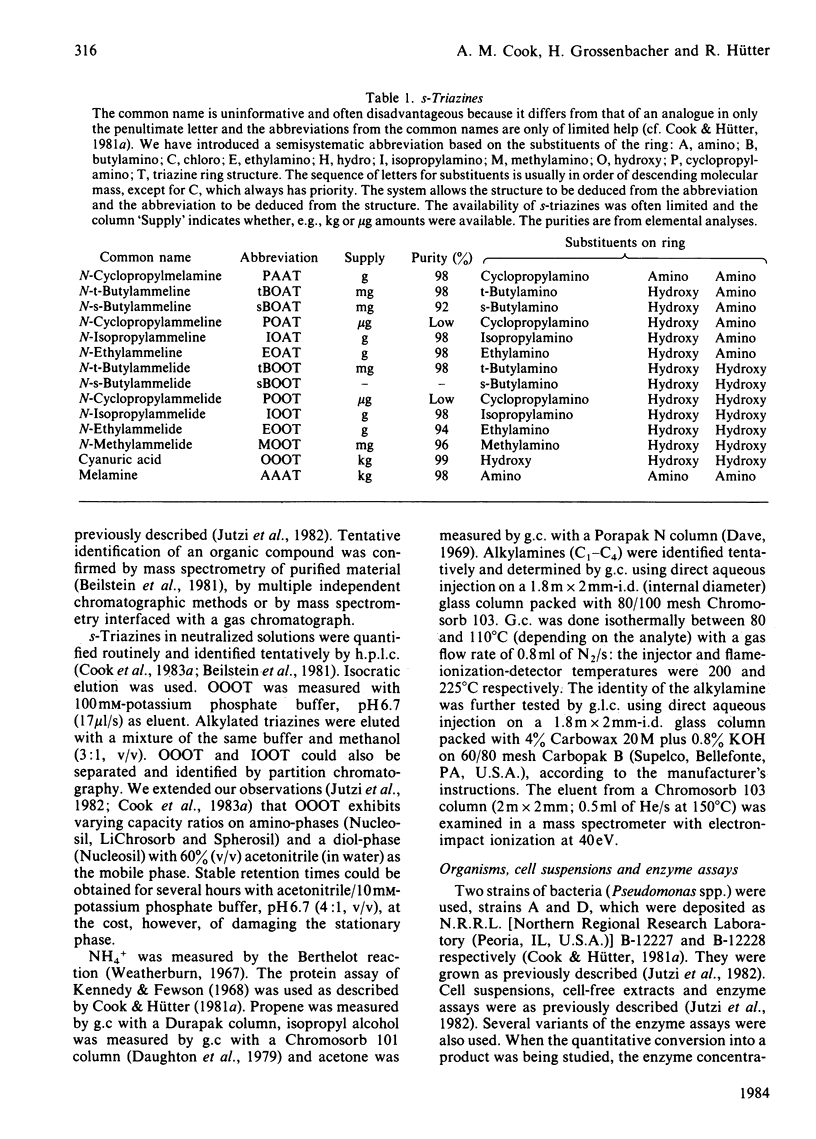
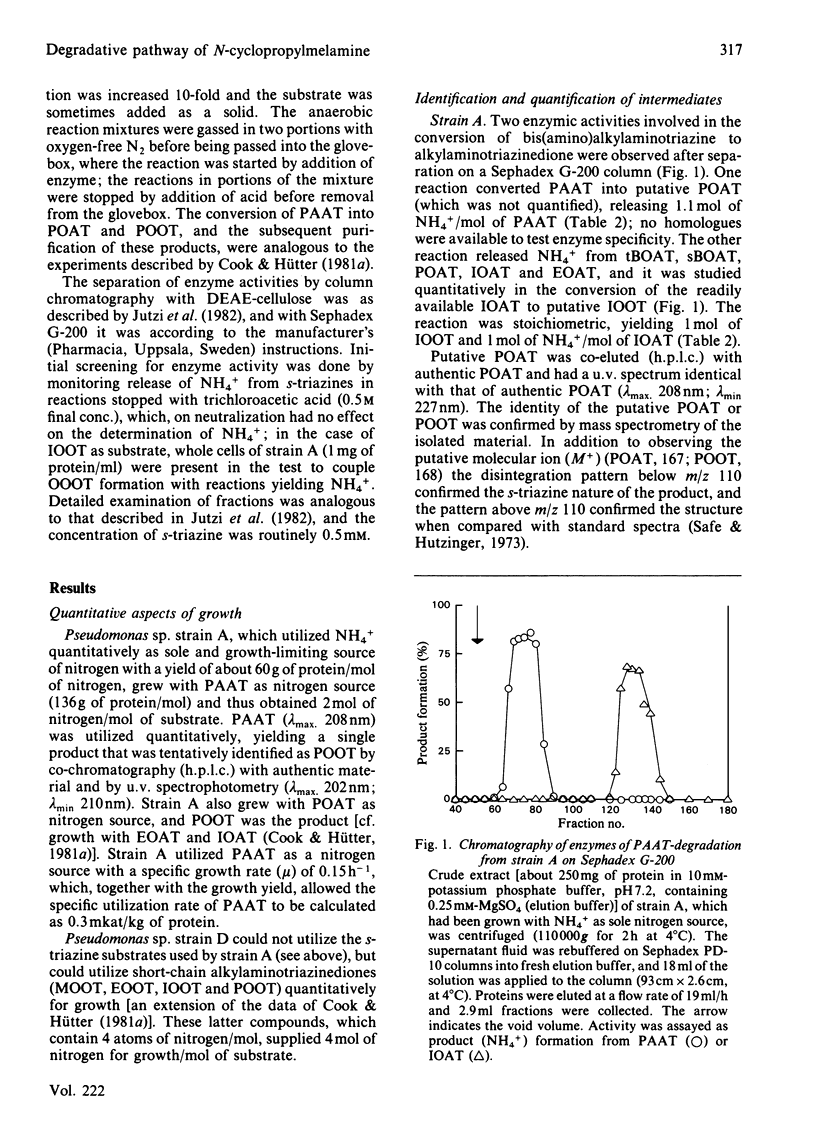
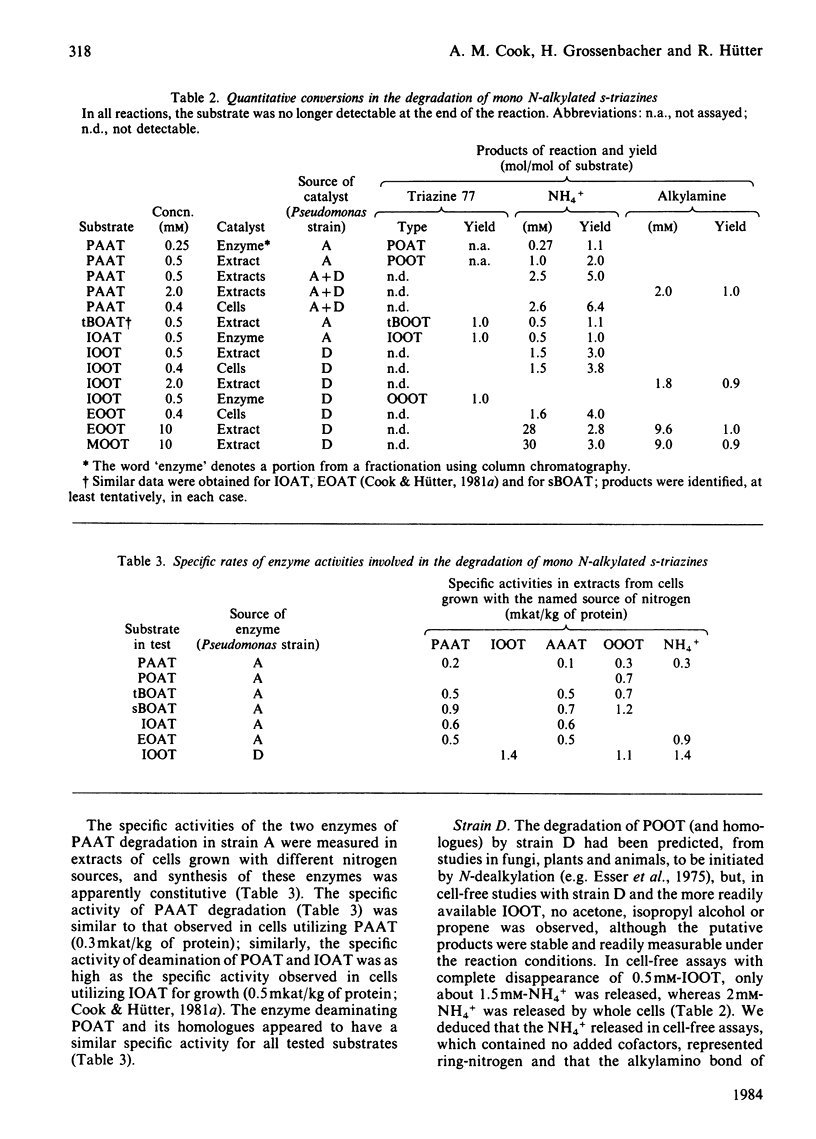
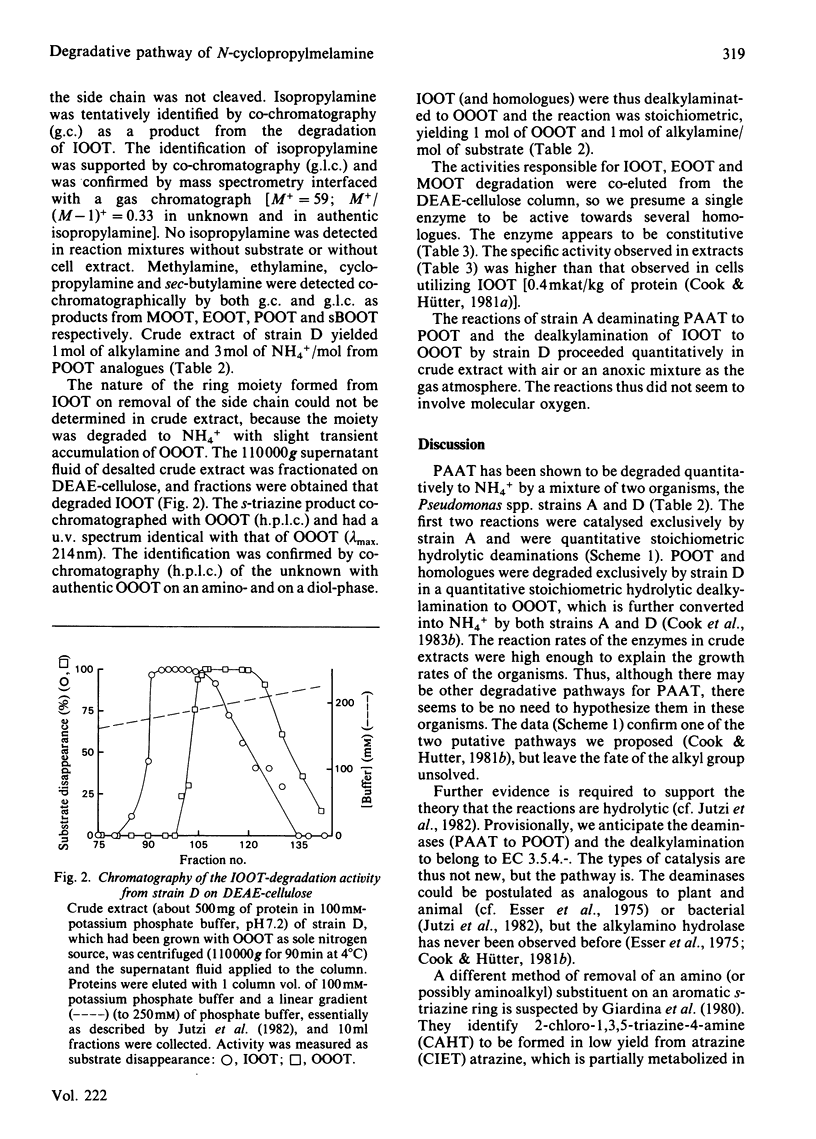
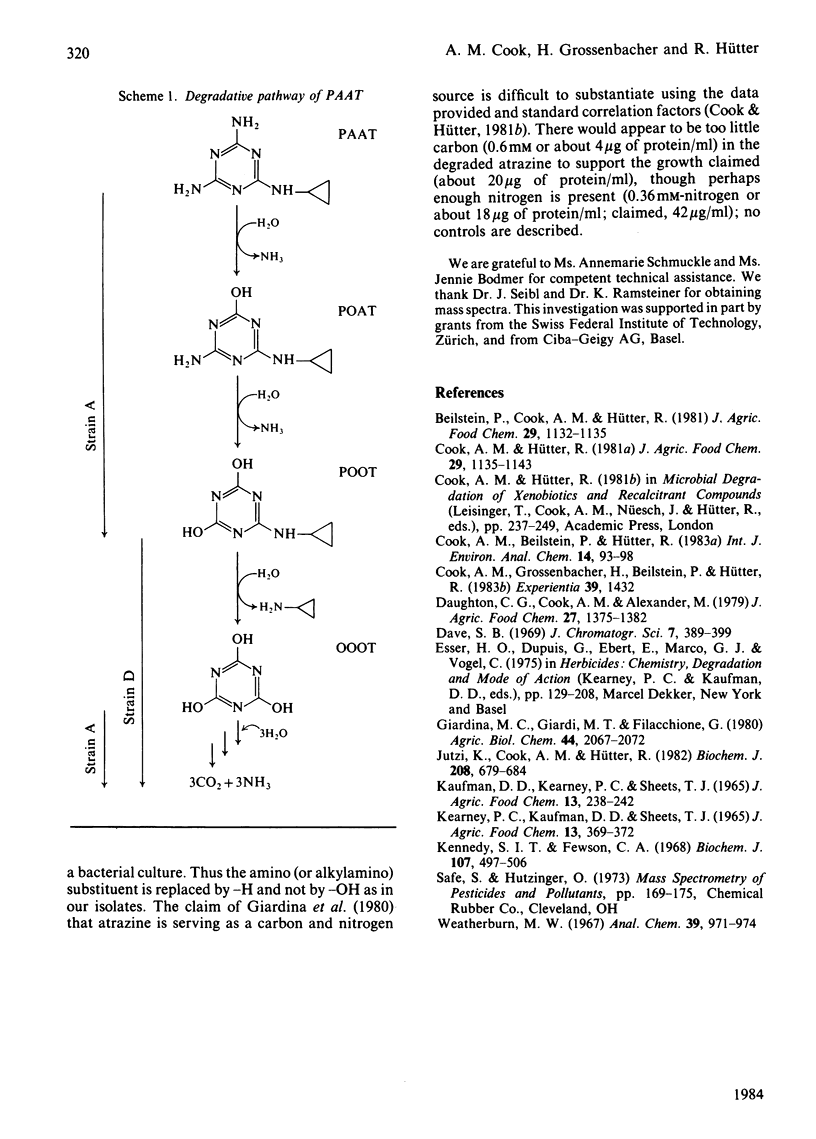
Selected References
These references are in PubMed. This may not be the complete list of references from this article.
- Cook A. M., Beilstein P., Hütter R. Qualitative analysis of waste-water from ametryne production. Int J Environ Anal Chem. 1983;14(2):93–98. doi: 10.1080/03067318308071610. [DOI] [PubMed] [Google Scholar]
- Jutzi K., Cook A. M., Hütter R. The degradative pathway of the s-triazine melamine. The steps to ring cleavage. Biochem J. 1982 Dec 15;208(3):679–684. doi: 10.1042/bj2080679. [DOI] [PMC free article] [PubMed] [Google Scholar]
- Kennedy S. I., Fewson C. A. Enzymes of the mandelate pathway in Bacterium N.C.I.B. 8250. Biochem J. 1968 Apr;107(4):497–506. doi: 10.1042/bj1070497. [DOI] [PMC free article] [PubMed] [Google Scholar]


